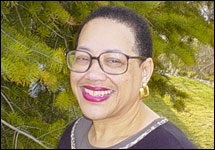 For the 35th consecutive year, the National Urban League has provided the nation an objective and thoughtful assessment of the African-American experience. In 2011, NUL's annual State of Black America profiled what it means to be a person of color in the throes of the worst recessionary economy since that of the 1930s Great Depression.
For the 35th consecutive year, the National Urban League has provided the nation an objective and thoughtful assessment of the African-American experience. In 2011, NUL's annual State of Black America profiled what it means to be a person of color in the throes of the worst recessionary economy since that of the 1930s Great Depression.
According to the NUL, the 2011 equality index that compares the experiences of people of color to that of Whites has an approximate 30 percent gap. From 2010 to 2011, the equality index fell from 72.1 to 71.5. "With every downturn in the economy", observed Marc Morial, NUL president, "urban and minority communities fall further and further behind."
With updated and disturbing data, the real challenge is: What do we intend to do about it? Embracing the NUL goal of making jobs the number one priority, the Center for Responsible Lending would quickly add that consumer protections go hand-in-hand with job creation and economic innovation. Effective consumer protections help consumers to get the most mileage from their earnings and credit. By avoiding predatory debt, consumers gain a better chance to build wealth and enhance everyday living.
For several years, CRL's research reports have repeatedly shown how Black America suffers a myriad of economic disparities. The chapter that appears in the new 2011 State of Black America publication, authored by Keith B. Corbett, CRL's executive vice-president, CRL calls for the expansion of proven programs that deliver sustainable redevelopment. Community residents are not only entitled to economic growth; but deserve the opportunity to participate in plans for their communities and a measure of whatever prosperity is derived.
According to CRL research, 2.5 million foreclosures have been completed nationwide. Further, nearly eight percent of African-American and Latino homeowners have lost their homes to foreclosures, compared to only 4.5 percent of Whites. Between these two communities of color, an estimated $370 billion of wealth has been lost. Among homeowners still current on their mortgages, nearly one in five is underwater; owing more money than their home is worth.
HUD's Neighborhood Stabilization program, authorized through the Housing and Economic Recovery and Reinvestment Act of 2009, communities are using these federal revenues to reverse the foreclosure effects that have devastated communities.
Currently, federal funding for multiple foreclosure assistance programs, including Neighborhood Stabilization, is in jeopardy. Several bills filed in the new Congress propose to end vitally-needed assistance. According to Morial, "If you reduce federal spending, you reduce economic growth. Our analysis shows that the proposed cuts could kill as many as 700,000 jobs and throw the country into a double-dip recession."
During the past decade, the New Market Tax Credits program (NMTC) has either created or retained nearly 500,000 jobs – largely in communities where unemployment rates exceed 1.5 times that of the national average. The program's attraction for investors is that for every dollar in cost to the government, $8.00 in private investment has been generated.
Community Benefits Agreements (CBAs), the third economic innovation supported by CRL transforms traditional adversaries into allies. Instead of community residents feeling displaced and overlooked in large-scale public projects, CBAs are negotiated and legally enforceable contracts that ensure community residents are participants as well as beneficiaries in major projects. By determining how exactly communities will benefit from employment, training programs, affordable housing and more, residents' fears are relieved, municipal officials no longer feel a tug of war between investment and citizens, and the projects benefit all. Recently successful CBAs include Washington, D.C.'s Shaw District, the Twin Cities' 'Wireless Minneapolis' project, and others in Atlanta, Boston, Denver, Seattle, and New York.
As more neighborhoods are saved from foreclosures and residents are able to benefit from jobs created near or where they live, CRL believes more people will participate in the economic recovery. The complete 2011 State of Black America chapter by CRL is available here
As CRL's Corbett wrote, "We must foster innovative investment solutions that lift up entire communities for growth and development. First we must stabilize housing losses that are the result of massive foreclosures. Next, we need public-private partnerships that leverage resources which on their own would be insufficient."
And, wouldn't that be a new State of Black America?
Charlene Crowell is the Center for Responsible Lending's communications manager for state policy and outreach.
- Home
- News
- Opinion
- Entertainment
- Classified
- About Us
 MLK Breakfast
MLK Breakfast- Community
- Foundation
- Obituaries
- Donate
11-24-2024 4:30 am • PDX and SEA Weather












































































































































































































































































































